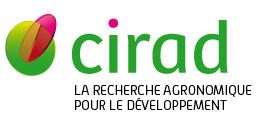How assessing consumer acceptability of a large number of food products?
Fliedel G., Maraval I., Bouniol A., Prin L., Adinsi L., Monteiro M.J., Tomlins K.I., Dufour D.. 2016. In : Eurosense 2016. Dijon : INRA; SFAS, 1 p.. European Conference on Sensory and Consumer Research. 7, 2016-09-11/2016-09-14, Dijon (France).
Introduction Breeders need to ensure that products made from a large number of new released cultivars, meet consumer acceptance. 17 cassava cultivars from two agro-ecological regions in Cameroon were processed into two traditional products. The challenge was to develop a new methodology to scientifically assess consumer perception of a large number of products. Methods The new methodology started with qualitative surveys all along the food chain as a baseline study on consumption ways and quality criteria of traditional products. A group of ãchampionã women processors was identified for making the 17 products in the same conditions. They were asked to give their comments on cassava behaviour throughout the processing, in view of adopting or rejecting the new cultivars, depending on their ability to make a good product. The selected products were tasted during focus groups, their sensory characteristics described, and the number of products reduced again. Finally, after approval by agronomists, five cassava products remained. They could be presented to a large number of consumers. Their acceptability and preferences were assessed using an "all-in-one" method coupling hedonic test, JAR "Just All Right" test, CATA "Check All That Apply" question and "willingness to payã. Physicochemical analyses of cultivars and products have identified quality traits. Results Two case studies on bobolo or ãbûÂton de maniocã in Mbalmayo, Centre region and gari in Buea, South-West region, will be given as examples and detailed. The methodological approach was different for each case, depending on the product, the process, and the local conditions. Discussion The originality of the approach was the participatory involvement of a group of women processors in the selection, at each step of the processing, of the improved cultivars with appropriate characteristics for traditional uses. The most liked cultivars for gari and those for ãbûÂton de maniocã appeared different.
Documents associûˋs
Communication de congrû´s
Agents Cirad, auteurs de cette publication :
- Bouniol Alexandre — Persyst / UMR QUALISUD
- Dufour Dominique — Persyst / UMR QUALISUD
- Maraval Isabelle — Persyst / UMR QUALISUD
